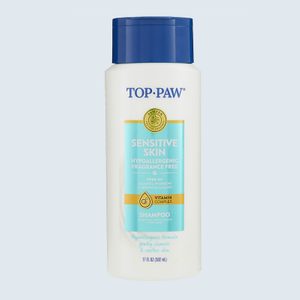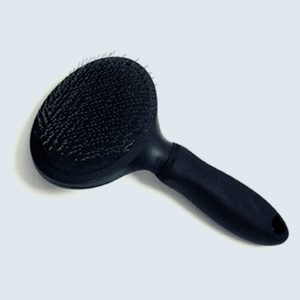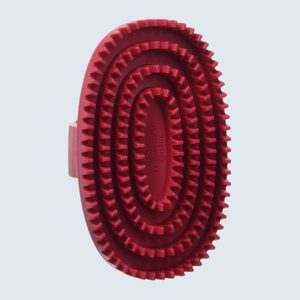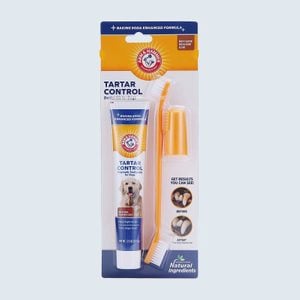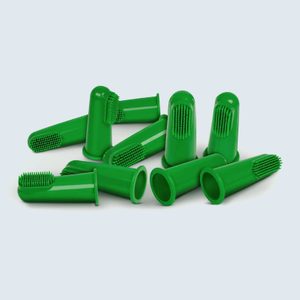How to Groom Your Dog at Home
Updated: Apr. 03, 2024
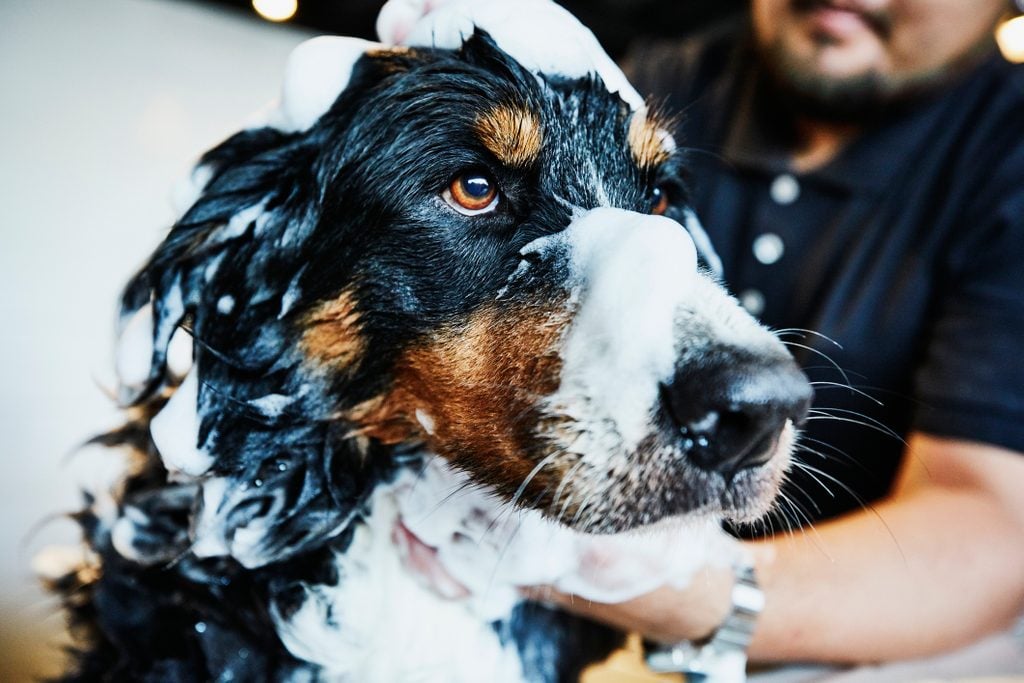
Whether your groomer’s currently closed or you’re looking to save a little money, here’s what you need to know before tackling this tricky task yourself.
Learning how to groom your dog isn’t just about making him look good. It also supports his overall health. According to the American Kennel Club (AKC), “good grooming will help your dog feel his best.” But these days, keeping up with your pup’s grooming routine might be a little more challenging, due to coronavirus restrictions. The good news is that you can groom your dog at home. As long as you have the right dog grooming supplies, such as gentle soaps, shampoos, and the best dog nail clippers, you can feel confident about taking matters into your own hands. Here’s what you need to know.
A little bit of at-home grooming goes a long way
Professional groomers might not be open for business in your area during the COVID-19 pandemic. Nevertheless, the AKC advises regularly maintaining at least some level of at-home grooming because it allows you to examine your pup for signs of problems you might otherwise miss. One of the 26 secrets your dog’s groomer wishes you knew is that good at-home grooming habits can make professional grooming easier for you, your dog, and your groomer, if and when you decide it’s time to return to the pet salon.
The secret benefit of grooming your dog
Regular grooming is a powerful tool in the battle against shedding, points out Matt Clayton, founder of Pet Hair Patrol, which is devoted to helping pet owners keep their homes clean. “Brushing, bathing, and trimming will not only keep your pet’s coat healthy and looking good. It also helps remove the hair your dog has shed before it can make its way to the floor and your furniture,” Clayton says. If this is an issue in your home, these 15 vacuum cleaners are top-notch when it comes to banishing pet hair.
So, here’s how to groom a dog—safely, swiftly, and right in the comfort of your own home.
Start with a “consultation”
Approach this the way professional groomers do, suggests Lisa MacQueen, former dog groomer and founder of Queen and Co., which offers business-consulting services. Begin by evaluating what your dog needs. Are his nails clicking on the floor when he walks? If so, a nail trim is in order. Is he pawing at his eyes? It could be time for a bang trim.
Set up your supplies
Depending on what your dog’s grooming will consist of, you’ll want to assemble some or all of these supplies:
- Clean towels and washcloths.
- Cotton balls.
- Soap and shampoo specifically for dogs. MacQueen warns against using products meant for humans—or worse, for dishes—as these can be irritating to your dog’s skin. These highly rated dog shampoos and conditioners are good choices.
- A washbasin, sink, tub, or even a baby pool.
- A breed-appropriate hairbrush. “Long-haired dogs need pin brushes, which have long, round-ended stainless steel or chrome-plated pins,” the AKC notes. “Short-, medium-, and some long-coated breeds need bristle brushes.” There are also slicker brushes and curry combs for removing matted and dead hair, as well as smoothing the coat.
- Clippers or scissors specially designed for dogs.
- A dog-appropriate nail trimmer and styptic powder (which will stop the bleeding in case you make a mistake).
- Your dog’s favorite treats and toys.
- Wine or your favorite drink (for you, for when you’re finished).
Set the mood
Before you begin any grooming session with your doggo, take her on a nice, long walk to make sure he’s done his business and feels all tuckered out. Plan to groom her in a contained area—for example, a bathroom, so that you can close the door. If your dog seems fearful, do your best to remain calm. Lavish love and treats on her, and try to keep the experience positive. If your dog seems particularly stressed out, that might mean giving up and trying again another day. Here’s the deal on whether you should give your dog CBD to help her stay chill.
Doing your dog’s do
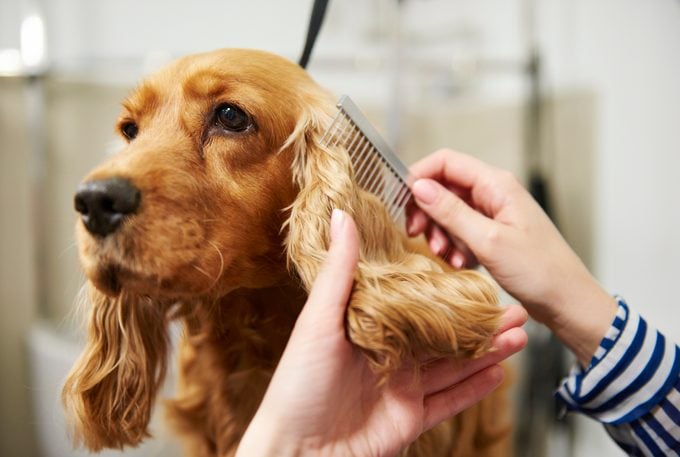
Regular brushing to remove loose hair will help to keep your pup’s coat—and your house—looking fresh. For longer, thicker hair, brush daily, advises MacQueen. For short hair, you can brush weekly. Not all dogs love getting their coats brushed, but no dog should cry or whimper during the process. So definitely be careful about combing through knots and mats.
“Go slow,” suggests Cindy Kelly, owner of Regis Regal German Shepherds, because this is an opportunity not only to remove the dead fur but also to stimulate the oils in your dog’s skin. Brushing is a good place to start your grooming session, adds Jennifer Freeman, DVM, PetSmart’s resident veterinarian. This is especially true if you’re planning on giving a bath, and even more so for long-haired dogs prone to tangles. Tangled hair can mat, which can turn bathing into a less-than-fun experience for both you and your dog.
The dreaded bath
Some dogs love water. Others…not so much. If your dog seems anxious, give lots of praise and encouragement, in addition to treats and toys, suggests Dr. Freeman. Also, make sure that the bathing space is large enough for your dog and that the water temperature isn’t too hot or too cold. If your dog won’t tolerate a tub-type bath, try a “sponge bath,” using a soft cloth to gently apply water and shampoo. Whichever method you choose, be mindful of your dog’s eyes; both water and shampoo can sting. Also, as soon as you’re done shampooing your dog, thoroughly rinse off any leftover soap. Not doing so can lead to dermatitis or “hot spots,” which is what Dr. Freeman calls moist and infected lesions on your pup’s skin.
Although your dog will likely enthusiastically participate in the drying process with a series of full-body shake-offs, you should help him along. Towel him off, starting with his head, face, and ears and working your way down his body (feet last). Helping with the drying process is particularly important for dogs with heavier coats since damp spots in the undercoat can lead to those hot spots discussed above. Follow these steps for a more in-depth look at how to bathe a dog.
RELATED: This is how often you should bathe your dog. (Spoiler alert: It’s nowhere near as often as you shower.)
The kindest cut
Dog groomers tend to have diverging views when it comes to pet parents trimming their dog’s hair at home. Some, such as Selina West and Anna Pollard, owners of The Dog House (Leicester) and publishers of a free downloadable book on grooming during social distancing, believe that dog haircuts are best left to the professionals. Others think that you’re in the best position to decide if you’re capable of tackling an at-home trim for your canine companion. PetMD offers the following tips to do so safely.
- Use professional shears or dog clippers (ideally, with a No. 10 clipping blade).
- Use a professional-style grooming table, which can secure your dog during a haircut.
- Start with dry dog hair, not wet. (Do your trimming after you brush, wash, and fully dry your pup.)
- Use only the tips of your shears to trim the feet, face, and tail.
- When trimming the ears, keep your non-cutting hand on the edge of the ear to ensure that you only cut hair and not skin.
- If you’re dealing with a matted coat, use clippers, not scissors.
- Try to avoid shaving your dog at home, but if you must, start with a dry, clean dog. Using a blade that isn’t dull, start around your dog’s neck and work your way down. Take even more care around the thin skin, such as where the limbs meet the torso (which can catch on the spaces between blades) and near the nipples (a female dog can have as many as ten).
And if you ever don’t feel comfortable, stop. There is no shame in deciding you’d be more comfortable if a professional tackled this task.
Eyes and ears
Using a moistened cotton ball (no soap), gently wipe your dog’s eye area to remove any debris or goo, MacQueen recommends. For the ears, use a warm, damp washcloth to wipe what you can see. Never use a Q-tip or other cotton swab to clean your dog’s ears: “The canal ear of a canine is longer/deeper than a human’s, but equally delicate, and improper techniques could lead to serious ear injuries and significant pain.” Some dogs need the hair plucked just inside the ear to keep air circulating, the AKC points out. But you should only do this if your veterinarian discusses it with you first.
Brushing the teeth
Cleaning your dog’s teeth is extremely important because it prevents tartar buildup, which can cause painful gum infections, notes Davor Bobek, a cofounder at World Dog Finder. Bobek recommends giving your dogs specialized dental sticks or toys designed to support oral hygiene. In addition, the AKC recommends cleaning your dog’s teeth frequently using special doggie toothbrushes (such as finger toothbrushes) and toothpaste designed just for dogs. “If your dog balks at having his teeth brushed, get him used to it by rubbing his teeth and gums with your finger,” Bobek suggests. “Then put a little of the toothpaste on your finger and let him sniff and lick it. Do the same with the toothbrush.” For older dogs, a special cleaning by a veterinarian may be required to handle tartar buildup. Here’s how often you should be brushing your dog’s teeth.
Also Check: Sweet puppy breath is a fleeting joy. But what causes it and how long can you expect it to stick around?
Getting to the “end”
You know when your dog scoots along the floor on his butt? Well, this can actually be a sign that he requires a form of grooming known as “expressing the anal sacs.” A dog’s anal sacs are located on each side of your dog’s rear end. They can become inflamed, which can drive your dog to the aforementioned scooting, as well as scratching or attempting to lick at the area. Inflamed anal sacs can also cause fluid secretion and odor. You should not attempt to express the anal sacs yourself (unless you’ve been trained to do so by a qualified veterinary professional). If you believe your dog needs this form of grooming, call your veterinarian for assistance, advises the AKC.
RELATED: 50 things your veterinarian won’t tell you
The nail-clipping debate
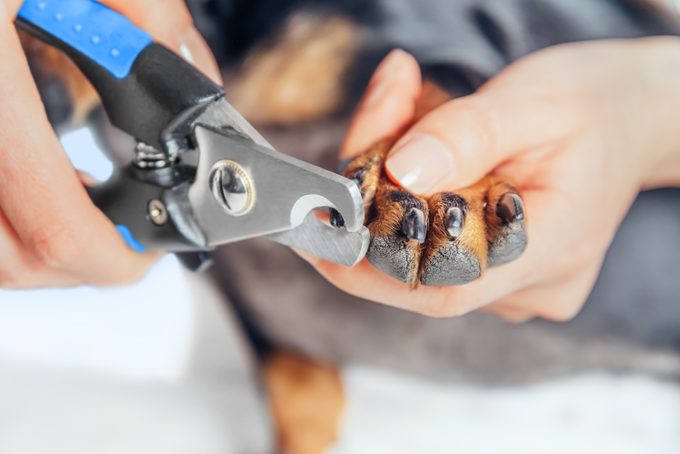
Doggie nails contain a blood vessel known as the “quick,” which, if nicked or cut, can lead to profuse (but not life-threatening) bleeding. For that reason, experts are divided as to whether dog parents should clip their own dog’s nails. No discussion of how to groom a dog would be complete without a little back and forth on the topic.
On the one hand:
“I’m personally not a fan of telling pet parents to trim their dog’s nails unless they’ve first practiced with their vet or groomer,” says MacQueen. The Dog House’s Pollard and West agree. If you’re not comfortable clipping your dog’s nails and you can’t get to a groomer, then call your vet to see if they can help.
On the other hand:
While trimming your dog’s nails might seem scary, it’s necessary to do, Kelly says, although she doesn’t recommend that pet parents use clippers. Instead, she suggests using a professional nail-filing tool such as this one by Dremel, for which she’s put together this how-to video. Before you attempt to trim your dog’s nails, make sure your dog is willing to let you touch his paws. In fact, you should initiate the process by physically examining your dog’s paws. Assuming he lets you, you’ll want to see if you can visualize the quick. On dogs with light-colored nails, it appears as a pale pink “core” within the nail. If your dog has dark nails, or if your dog won’t let you examine his nails, you’re better off seeking veterinary assistance.
RELATED: I’m a Vet—And These Are the Only Dog Nail Clippers I Use
If you do decide to clip those nails
Many dog parents regularly face down their fear and clip their own dog’s nails. If you decide you’d like to try, follow these steps from Theresa Miller, Breeding Relations Supervisor at PuppySpot.
- Have treats on hand, and also ideally a partner who can help you by giving treats and otherwise distracting your dog.
- Give your dog a treat while picking up your dog’s paw. Start by tapping the nail clippers lightly against your dog’s nails. Repeat several times or until you feel your dog is comfortable.
- Cut your dog’s nail from underneath. Steer clear of the quick, which will be a different color from the rest of the nail (usually pink).
- Trim a little at a time to avoid the quick.
- If you cut the quick, you can help stop the bleeding with a styptic powder made specifically for this purpose, such as this one by Cardinal Laboratories.
- Remain calm and be a soothing example for your pup throughout the process.
Miller’s Forge makes great clippers for dogs of different sizes, including this one for large dogs and this one for small- to medium-size dogs.
Some important miscellaneous tips
- Never push your dog too far. Your dog will communicate if you’re heading in that direction with body language. This includes lip licking, fast blinking, pulling back his ears, and, of course, teeth baring and growling or snapping. Never push yourself too far either, they add. If you’re feeling anxious or stressed, come back to it another time.
- Never do anything to your dog that you don’t feel 100 percent confident about. And never appear stressed when bathing or grooming your dog, since it will just cause her stress.
- Never clip your dog’s hair close to the eyes, ears, anus, or genitals. Leave that to a professional groomer or your veterinarian.
RELATED: 50 secrets your pet won’t tell you
Sources:
- The American Kennel Club
- Matt Clayton of Pet Hair Patrol
- Lisa MacQueen of Queen and Co.
- Cindy Kelly of Regis Regal German Shepherds
- Jennifer Freeman, DVM of PetSmart
- Selina West and Anna Pollard of The Dog House (Leicester)
- PetMD
- Davor Bobek of World Dog Finder
- Theresa Miller of PuppySpot

